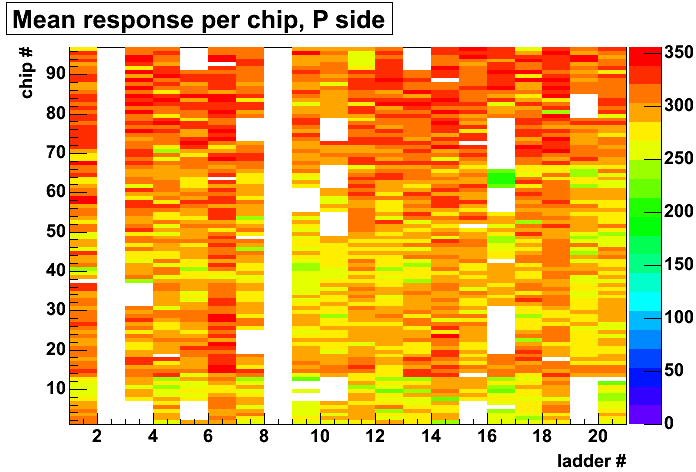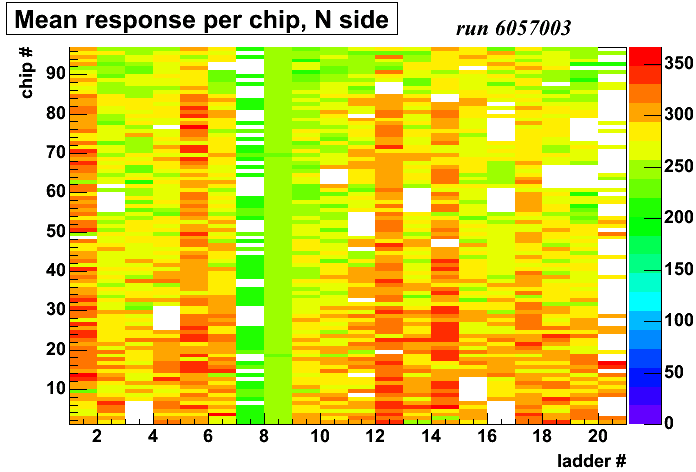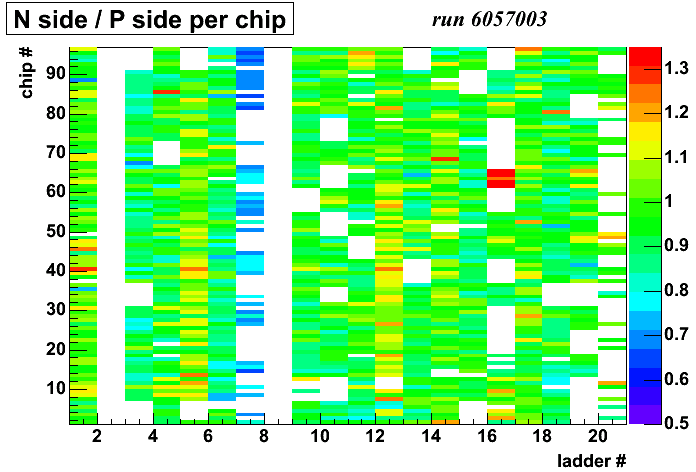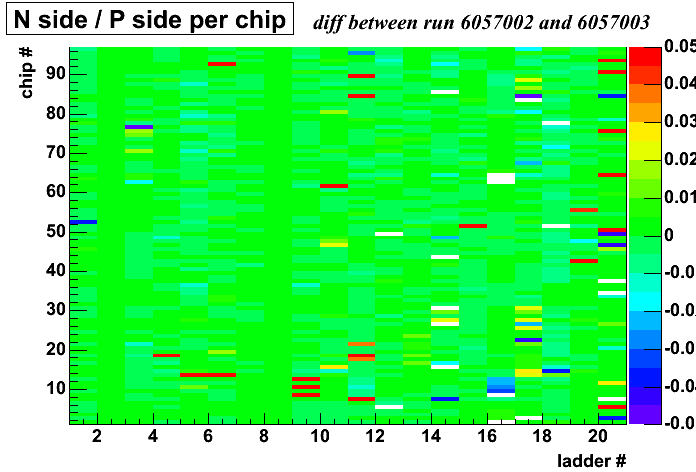




|
| Picture 4: The difference of two ratio pictures of two different runs. There values are distributed around zero (as expected), and show a difference smaller than 5% between two runs. |
|
|
|
|
| Picture 7: z-coordinate of first hit. | Picture 8: x-coordinate of first hit. | Picture 9: y-coordinate of first hit. |